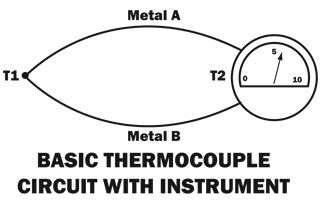


General Description
Contact Temperature Sensors are:
All three types of temperature sensors have their application fields.
Temperature sensor placement
The placement of the contact sensor (with non-contact devices a fiber-optic cable could be used) is the most important with regards to temperature control.
If the heat source, the material to be heated and the sensor can be placed within closed proximity to each other, a high degree of accuracy can be achieved. Also, if the sensor is mounted on the surface it is important to embed the sensor into another material so it can work as a heat sink. If the heat source is located some distance from the work, widely different accuracies can be obtained just by locating the sensor at various places between the heater and the work.
If the heat demand is relatively steady, the sensor could be placed close to the heat source.
If the heat demand is variable, placing the sensor near the work will enable it to sense a temperature change quicker. Because of the increase in thermal lag between the heater and the sensor, more overshoot and undershoot can occur, causing a greater spread between max and min temperature. This spread can be reduced by adapting the parameters in the PID controller.
Thermowell
Thermowells are mainly used in liquids or gases to provide insulation between a temperature sensor like a thermocouple or RTD and the material being measured. A thermowell allows the temperature sensor to be removed and replaced without interruption of the process or damaging the ambient. Before installation of a thermowell, consider this:

|